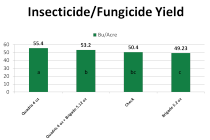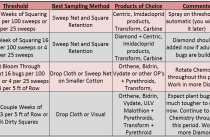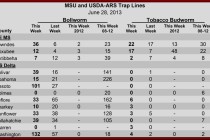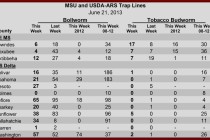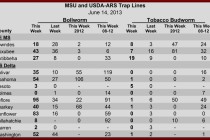Soybean Disease Update: July 5, 2013
Over the past two weeks soybean diseases have become apparent throughout the MS soybean production system. Isolated reports of frogeye leaf spot in reproductive maturity soybean fields as well as Fusarium wilt have been on the rise. Stay tuned to the Mississippi Crop Situation Blog for disease monitoring situations, including maps of counties where soybean rust and strobilurin-resistant frogeye have been made throughout the 2013 season.

